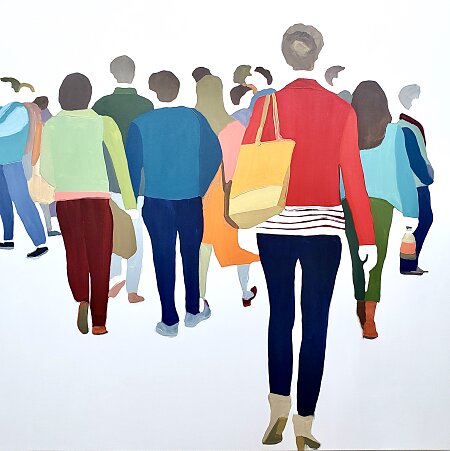
A Curve in the Road
A dot is a point where life is confirmed.
-Lia Purpura, “Dot”
One day, near my house, in the road’s outward curve lay a dead fox. It was a cub. Not quite the size of a corgi but bigger than a cat. She hadn’t yet assumed the sleek, slender shape of the adult but was fully formed and could have been sleeping there in the dip of the gutter.
The cub’s newness, the soft sandy-brown fur and pure white belly, was clear to see. She was on her side, legs outstretched, dark-tipped paws resting neatly one on top of the other. But her presence was alien. A breeze gently ruffled the downy fur; she was otherwise undisturbed in the slipstream of passing traffic. Yet, lying as she was on the fringe of the road, the onslaught of vehicles and the proximity of rotating wheels exposed the vulnerability of her body.
On my way out to pick up groceries—the letter I’d received the day before stowed in the side pocket of my bag, to be read again in Tesco’s carpark—I drove past the cub. In the clash of emotions where guilt at her death and observation of her presence met, I imagined her balanced on the dividing dry stone wall—on one side the safety of the lush green field, on the other the intermittent peril of cars and lorries hurtling by on the tarmacked surface. The known versus the unknown. Foxes are the fourth most common animal killed on UK roads. This one didn’t survive. In the landscape of the grey gutter, life became death.
The second time I passed the cub—an hour or so later, on my way home—her position had changed. She’d twisted slightly. There was an upward lift of a paw, a signal as if to say stop, take stock, don’t move so fast. I’m here.
The letter had arrived on Thursday for a Monday appointment. I’d been called back to the Scottish breast screening clinic for further investigation. “Your results are unclear” said the invitation to attend. I passed the weekend in a haze of anxiety. I looked up the nature of the breast—lobules and ducts and fat. I fixated on where errant cells might lodge and multiply if unchecked. I sought out images of mammary tissue inflicted by cellular change. Breast cancer is the most common female malignancy in the UK, affecting close to fifty-five thousand women a year—a lifetime risk of one in seven. With these vital figures in mind, I scoured endless googled articles detailing the individual odds, the stages of the disease, treatments and statistics for survival by age, by tumour grade, by anatomical location.
I stood in the shower under a cascade of warm water and inspected my breasts for aberrant signs, gingerly palpating the bosomy flesh. But there was nothing to see or feel; my skin was flushed but smooth to touch, my nipples pink, the dark rings of areola tissue intact.
I reread the letter. I interrogated each word. Of those cases recalled for reinvestigation, the condition diagnosed is benign in four instances out of five. I spun the information on its head; the condition diagnosed is malign for twenty women in a hundred.
I told no one of the impending appointment. My husband, in whom I could have confided—my husband, who might have said stop, take stock, don’t move so fast—was one year, five months, and nine days dead. I smiled at family events then emailed the lawyer to update my will. Somewhere over the weekend, between survivors’ stories and grievous medical illustrations of necrosed and ulcerated breasts, between the skitter of early morning sunlight on the pale bedroom walls and the dark sheets of empty sleep, I resigned myself to fate.
On Monday morning, on my way to the city and the clinic, I drove past the cub for a third time. She was on her back now, her white belly fully exposed, legs splayed in the air. As if in a futile frolic. Life in death. Only the awkward twist of her head betrayed the absence of volition.
